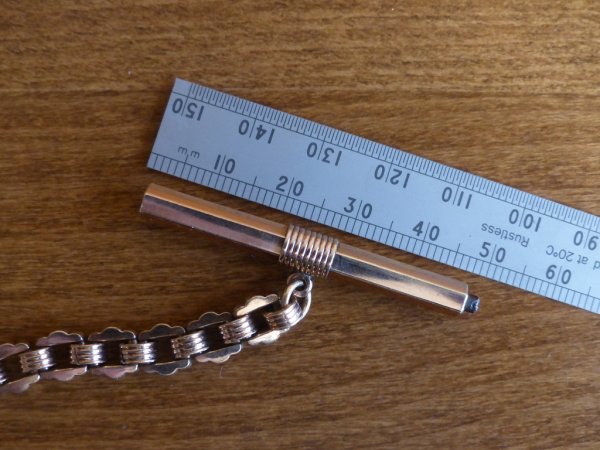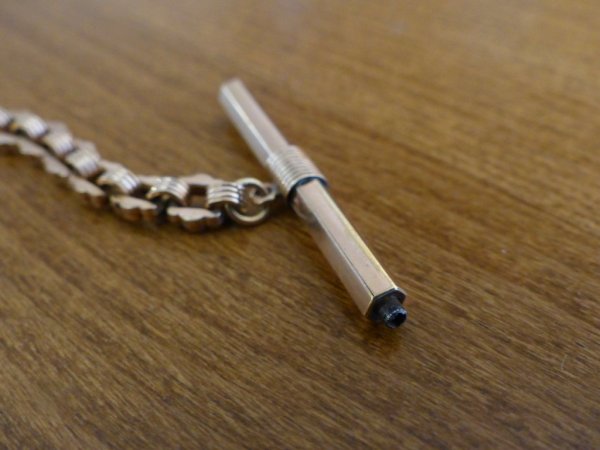Artifex
Familiar Face
- Messages
- 90
- Location
- Nottingham, GB
Not so long ago, I bought a watch chain from one of the usual internet sources. It was advertised as "antique", and is certainly old, though I couldn't date it.
The T-bar is magnetic (presumably steel), and arranged so that the central barrel is trapped between the two hexagonal arms, but free to rotate. The arms can be pulled apart slightly, and spring back together.
The question, then, is the purpose of the black stub on one end. Why is it there, and why was it left as a relatively unsightly feature on a piece that was designed to be attractive? Surely not an accident of design!


Any thoughts?
The T-bar is magnetic (presumably steel), and arranged so that the central barrel is trapped between the two hexagonal arms, but free to rotate. The arms can be pulled apart slightly, and spring back together.
The question, then, is the purpose of the black stub on one end. Why is it there, and why was it left as a relatively unsightly feature on a piece that was designed to be attractive? Surely not an accident of design!


Any thoughts?